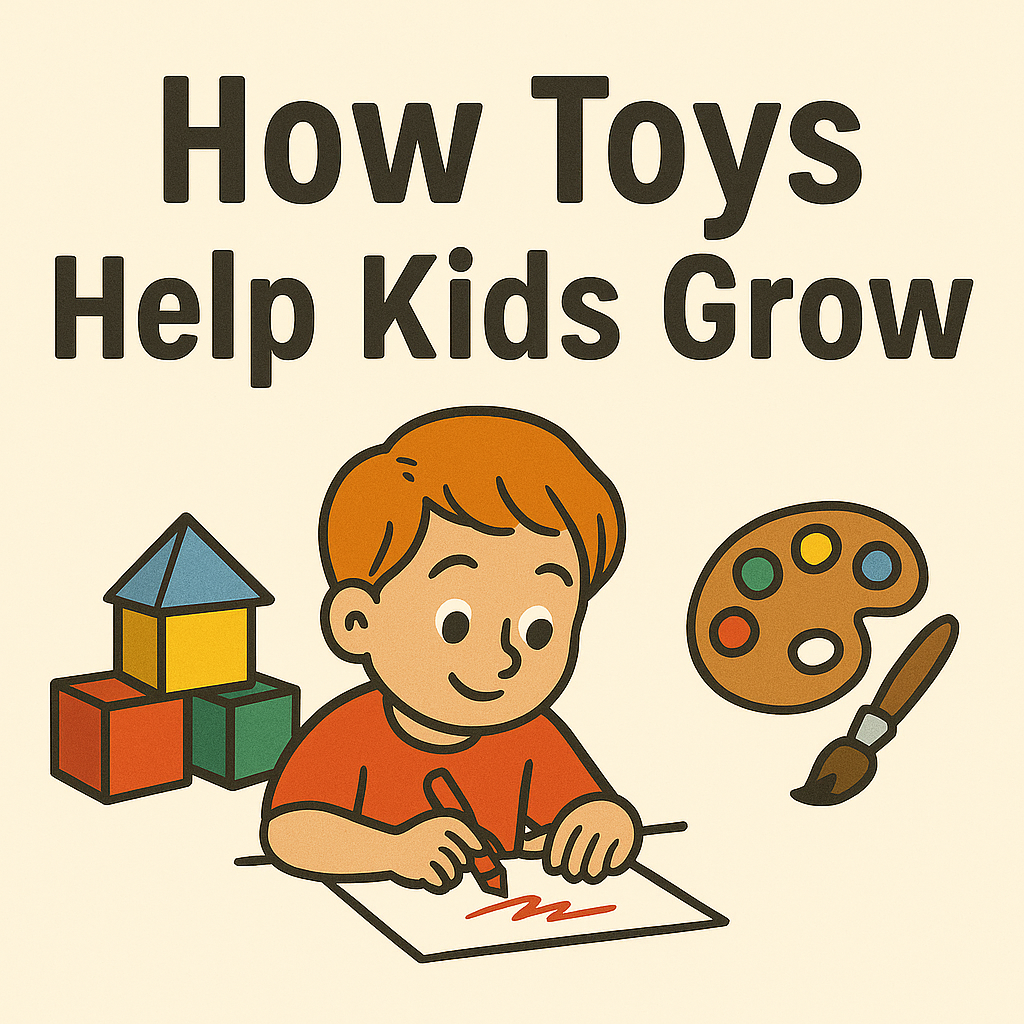
How Toy Types Affect Child Development
Share
Understanding the Impact of Play through Science
Toys are more than entertainment—they are vital tools for a child’s physical, cognitive, and emotional development. Depending on the toy type, children engage different brain regions, muscles, and social functions. In this blog post, we explore how various toys support specific developmental areas, based on research and educational theory.
🎨 1. Drawing Toys: Fostering Creativity
Drawing and coloring tools not only improve fine motor skills but also encourage creative thinking and emotional expression. According to a study by Koutra et al. (2021), children who engage in artistic expression demonstrate greater emotional regulation and narrative development. These activities stimulate the right hemisphere of the brain, supporting imagination and innovation.
“Creative play activates the brain's divergent thinking and self-reflective capacities.”
(Koutra, K., et al., 2021, Art Therapy Journal)
🧱 2. Block Toys: Boosting Spatial and Problem-Solving Skills
Block play helps develop spatial awareness, problem-solving, and hand-eye coordination. A longitudinal study by Verdine et al. (2019) showed that spatial play, like block building, is significantly correlated with future math performance and logical reasoning.
“Block building strengthens mental rotation and spatial scaling—skills vital for STEM readiness.”
(Verdine, B. et al., 2019, Child Development Research)
🧩 3. Puzzle Toys: Enhancing Focus and Logic
Puzzles challenge children to analyze shapes, remember patterns, and improve attention span. Research from Fisher et al. (2013) found that children who played with puzzles performed better in tasks involving shape recognition, sequencing, and logic.
“Puzzle play develops early spatial vocabulary and visual-spatial reasoning.”
(Fisher, K., et al., 2013, Developmental Psychology)
🧸 4. Pretend Play Toys: Building Emotional and Social Intelligence
Dolls, kitchen sets, and other imaginative toys support emotional development and social understanding. According to Whitebread et al. (2017), pretend play enhances theory of mind and empathy. Role-playing allows children to explore different perspectives, encouraging emotional maturity.
“Imaginative play supports self-regulation and social role understanding.”
(Whitebread, D., et al., 2017, Cambridge Educational Review)
🕹️ 5. Remote-Controlled Toys & Scooters: Coordination and Reaction Time
These toys engage gross motor skills, balance, and reaction speed. A study by Suggate et al. (2020) found that physical play with feedback (like RC toys and scooters) improved motor coordination and spatial mapping.
“Action-based toys stimulate real-time decision making and proprioception.”
(Suggate, S., et al., 2020, Journal of Motor Behavior)
🎯 Conclusion
Every toy plays a unique role in shaping a child’s development. Whether it’s drawing to express creativity, blocks for logical thinking, or pretend play for empathy—smart toy selection leads to smarter, more emotionally attuned kids.
Invest in play. It’s the most natural way children learn.
